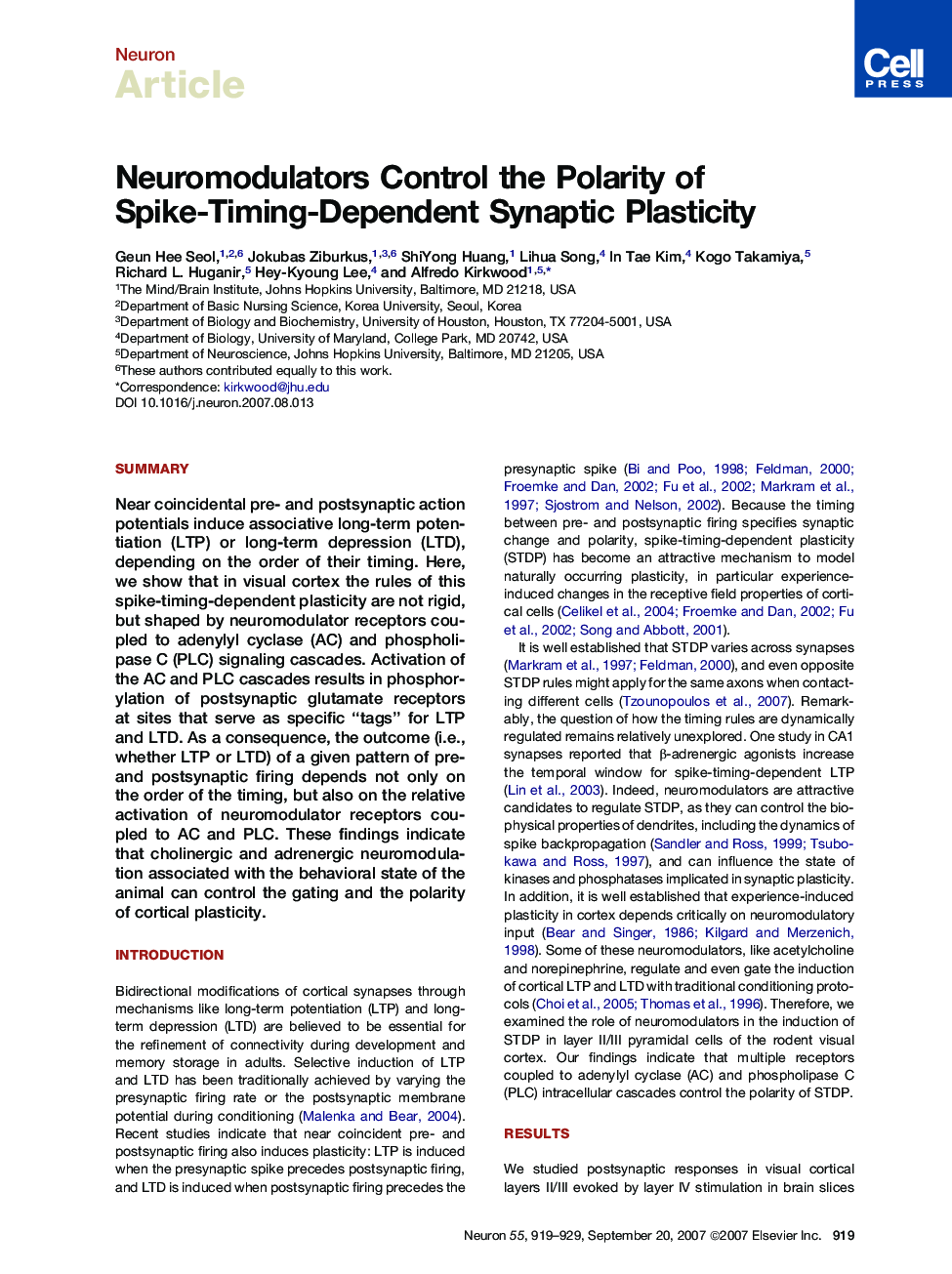| Article ID | Journal | Published Year | Pages | File Type |
|---|---|---|---|---|
| 4322691 | Neuron | 2007 | 11 Pages |
SummaryNear coincidental pre- and postsynaptic action potentials induce associative long-term potentiation (LTP) or long-term depression (LTD), depending on the order of their timing. Here, we show that in visual cortex the rules of this spike-timing-dependent plasticity are not rigid, but shaped by neuromodulator receptors coupled to adenylyl cyclase (AC) and phospholipase C (PLC) signaling cascades. Activation of the AC and PLC cascades results in phosphorylation of postsynaptic glutamate receptors at sites that serve as specific “tags” for LTP and LTD. As a consequence, the outcome (i.e., whether LTP or LTD) of a given pattern of pre- and postsynaptic firing depends not only on the order of the timing, but also on the relative activation of neuromodulator receptors coupled to AC and PLC. These findings indicate that cholinergic and adrenergic neuromodulation associated with the behavioral state of the animal can control the gating and the polarity of cortical plasticity.
